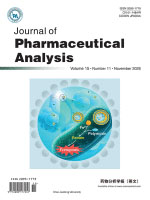2023, 13(2): 187-200.
doi: 10.1016/j.jpha.2022.11.006
Abstract:
Epidemiological and animal studies indicate that pre-existing diabetes increases the risk of Parkinson's disease (PD). However, the mechanisms underlying this association remain unclear. In the present study, we found that high glucose (HG) levels in the cerebrospinal fluid (CSF) of diabetic rats might enhance the effect of a subthreshold dose of the neurotoxin 6-hydroxydopamine (6-OHDA) on the development of motor disorders, and the damage to the nigrostriatal dopaminergic neuronal pathway. In vitro, HG promoted the 6-OHDA-induced apoptosis in PC12 cells differentiated to neurons with nerve growth factor (NGF) (NGF-PC12). Metabolomics showed that HG promoted hyperglycolysis in neurons and impaired tricarboxylic acid cycle (TCA cycle) activity, which was closely related to abnormal mitochondrial fusion, thus resulting in mitochondrial loss. Interestingly, HG-induced upregulation of pyruvate kinase M2 (PKM2) combined with 6-OHDA exposure not only mediated glycolysis but also promoted abnormal mitochondrial fusion by upregulating the expression of MFN2 in NGF-PC12 cells. In addition, we found that PKM2 knockdown rescued the abnormal mitochondrial fusion and cell apoptosis induced by HG+6-OHDA. Furthermore, we found that shikonin (SK), an inhibitor of PKM2, restored the mitochondrial number, promoted TCA cycle activity, reversed hyperglycolysis, enhanced the tolerance of cultured neurons to 6-OHDA, and reduced the risk of PD in diabetic rats. Overall, our results indicate that diabetes promotes hyperglycolysis and abnormal mitochondrial fusion in neurons through the upregulation of PKM2, leading to an increase in the vulnerability of dopaminergic neurons to 6-OHDA. Thus, the inhibition of PKM2 and restoration of mitochondrial metabolic homeostasis/pathways may prevent the occurrence and development of diabetic PD.



